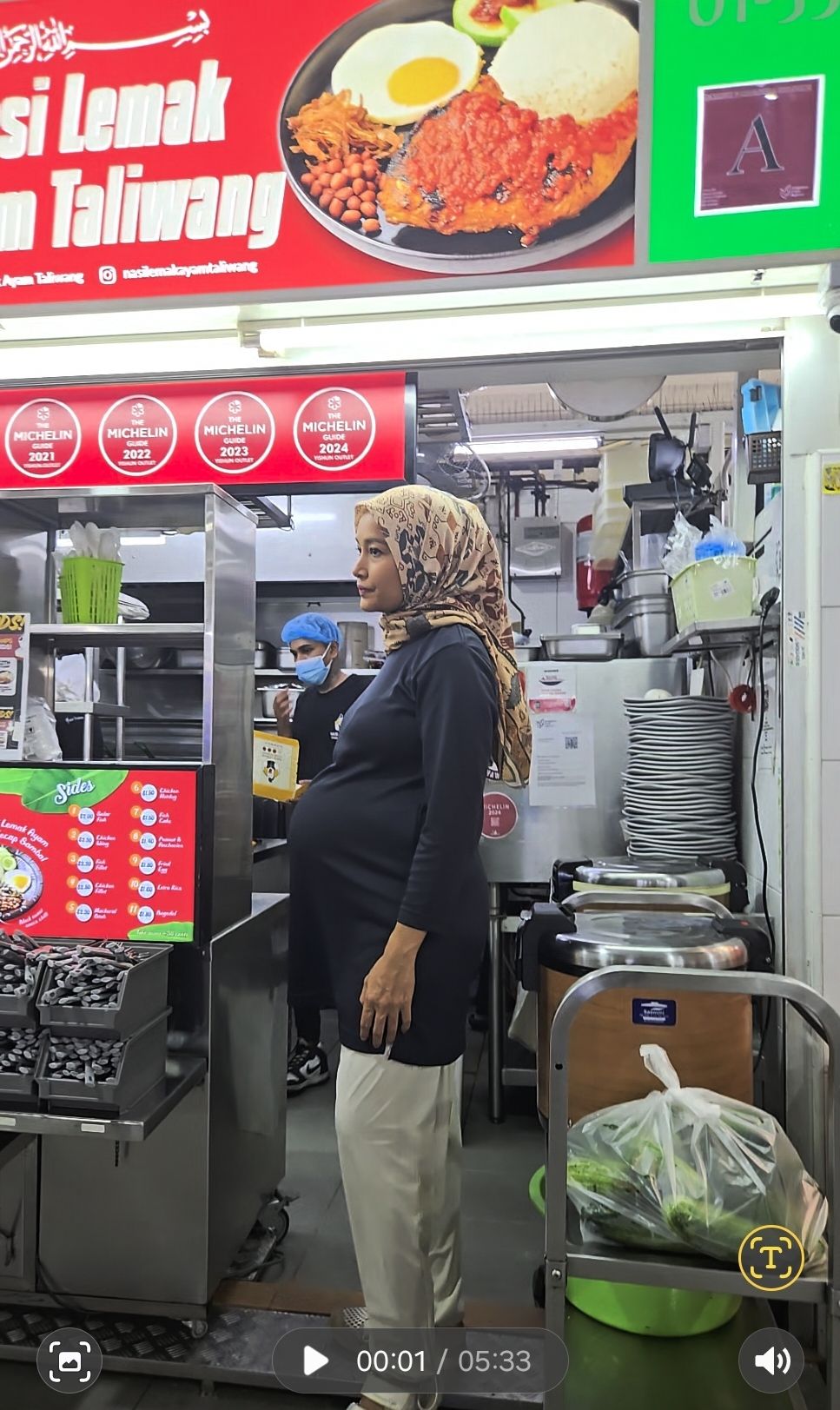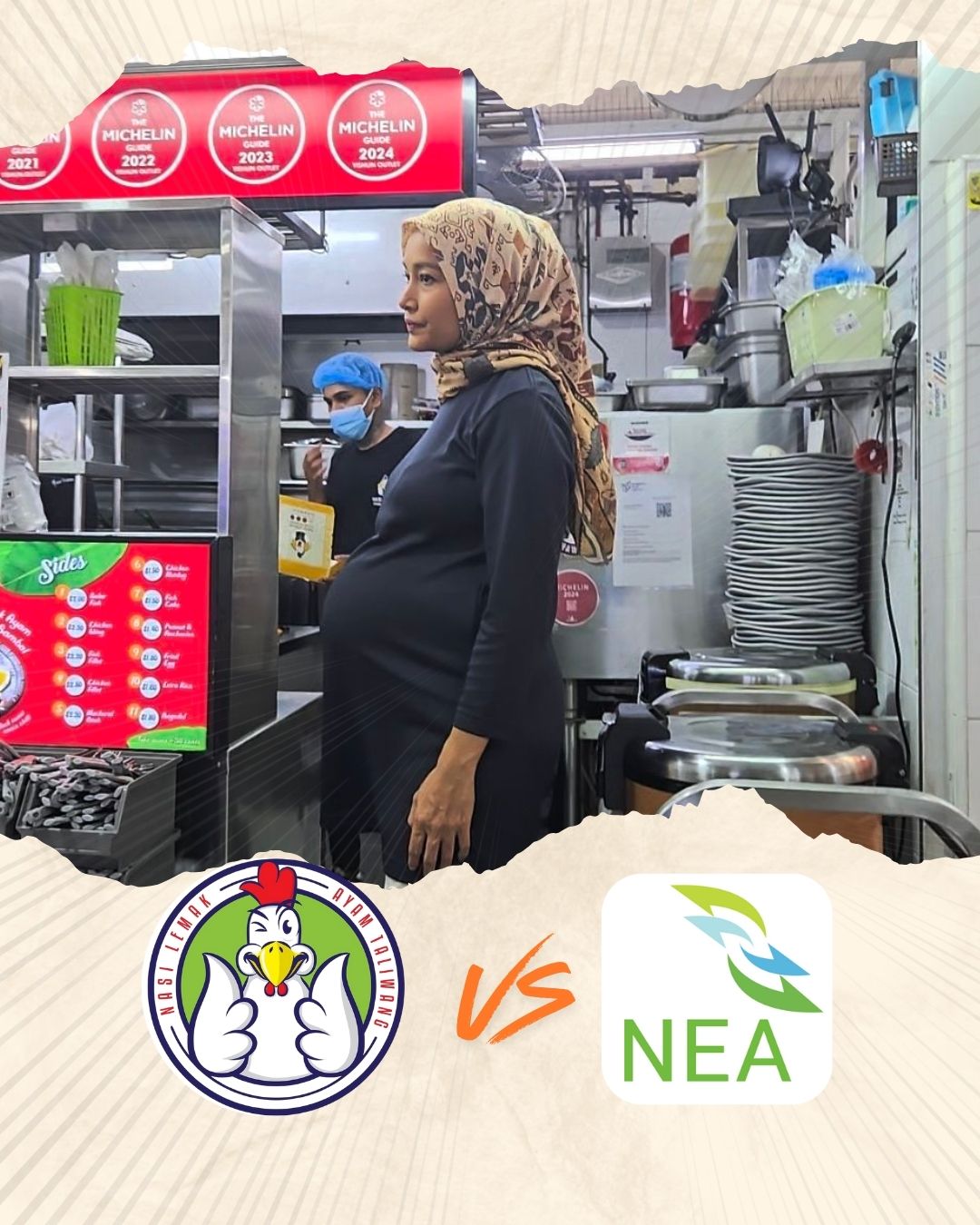In recent weeks, the saga surrounding Mr. Noorman Mubarak and his Nasi Lemak Ayam Taliwang stall at Yishun Park Hawker Centre has sparked a heated debate over Singapore’s hawker policies. What started as a dispute between Noorman and the hawker centre’s operator, Timbre, has evolved into a national conversation on entrepreneurship, fairness, and the future of hawker culture.
At the heart of the controversy is a fundamental question: Should hawker stalls be strictly run by their owners, or should they be allowed to scale up and operate like any other F&B business? The debate has divided Singaporeans, with some supporting the government’s stance, while others—especially business owners—argue that the rules need to change to reflect modern realities.
Background: How Did This All Start?
This saga began when the wife to Noorman, the owner of Nasi Lemak Ayam Taliwang at Yishun Park Hawker Centre, received a warning from the hawker centre’s operator, Timbre Group. The issue? Noorman’s wife, who is listed as the “stall owner”, is not physically present as she should be at the stall. The pregnant lady, however, was unable to physically operate the stall daily due to the condition. According to Noorman, Timbre was already informed of her condition, and that Timbre never acknowledged their reply (all communications thus far had always been through Whatsapp).

Under current rules enforced by the National Environment Agency (NEA), hawker stall owners must be personally present to operate their stalls. If they are absent, they must apply for a nominee—usually a family member—to run the stall on their behalf. According to Noorman, he has already submitted an application, but the process became unclear when Timbre claimed it had been approved, while Noorman stated that he had not received any confirmation.
Two weeks after the first warning, Noorman’s wife received second warning, this time through email, insisting for her to be present at the stall. Frustrated, Noorman took to social media to highlight his struggles, sparking a wave of public discussion. The issue gained momentum when Senior Minister of State for Sustainability and the Environment, Koh Poh Koon, commented on the case, stating that the rules exist to prevent chain businesses from dominating the hawker scene and to maintain fairness.
However, many hawkers and food industry professionals quickly came to Noorman’s defense, arguing that the rules were outdated and impractical. This debate has since evolved into a larger discussion about how Singapore’s hawker trade should be managed in the future.
NEA and the Government’s Perspective: Protecting Hawker Culture and Preventing Subletting
NEA, which oversees hawker centres, has long been strict about preventing subletting and keeping chain businesses from taking over. Senior Minister Koh defended the policy, stating that it is a “practical and fair way” to prevent abuse.
The government’s key concerns are:
- Preventing hawker centres from becoming commercialized – If stallholders were allowed to rent out or assign their stalls freely, large F&B chains could enter the hawker scene, making it harder for independent hawkers to survive.

- Preventing hawker centres from becoming commercialized – If stallholders were allowed to rent out or assign their stalls freely, large F&B chains could enter the hawker scene, making it harder for independent hawkers to survive.
- Avoiding rental profiteering – Some individuals could bid for stalls without the intention of running them, only to sublet them at a higher rate. This would drive up costs for aspiring hawkers and make the industry less accessible.
- Maintaining the traditional spirit of hawker culture – Hawker centres were originally meant to provide affordable food and self-employment opportunities, not to become platforms for large business expansions.
NEA insists that these measures are in place to protect aspiring hawkers and ensure fair competition. However, many in the F&B industry feel that these rules are too rigid and do not reflect the realities of running a modern food business.
The Hawkers’ and Business Owners’ Perspective: The Need for Flexibility and Fairness
Many hawkers and F&B entrepreneurs disagree with the government’s approach, arguing that the rules are outdated and do not reflect modern business needs.
- The “Chain Business” Argument Is Inconsistent
Critics have pointed out that there are already many hawker chains operating in Singapore, with multiple stalls under the same brand. However, these businesses are often owned by corporations or are sometimes franchises. While individual stall owners face strict regulations, corporations operate multiple stalls with hired staff, blurring the lines of policy enforcement, and penalizes independent business owners while favouring bigger brands.
- Running a Stall Personally Every Day Is Unrealistic
Niven Leong, a veteran hawker, questioned why stall owners are required to be physically present every day. He pointed out that other businesses do not operate this way—why should hawkers be treated differently?Many also argue that requiring stallholders to work daily without rest goes against the government’s own push for work-life balance. As KF Seetoh sarcastically put it, “Even if Noorman’s wife is not pregnant, they have a right to well-being needs and take emergency days off, just like you when you ran your clinic.
- Hawker Entrepreneurs Should Be Encouraged, Not Punished
Some critics argue that Noorman should be praised, not penalized, for growing his business. He started with a single stall in 2017 and expanded through hard work—why should that be discouraged? If a hawker can scale up while maintaining quality, shouldn’t that be seen as a success story?

The UNESCO Hawker Culture Debate
Another concern is whether these restrictive rules could harm Singapore’s UNESCO-listed hawker culture. Critics worry that if hawkers are forced to operate under restrictive and impractical conditions, fewer young people will enter the trade. This could eventually lead to a decline in hawker culture, making it a symbolic heritage rather than a thriving industry.
As KF Seetoh noted, “NEA lacks the foresight and wisdom to groom Singapore’s food culture.” He argued that instead of focusing on infrastructure improvements, the government should rethink how to support the next generation of hawkers.
Conclusion: Finding a Middle Ground
The Nasi Lemak Ayam Taliwang saga is not just about a single stall—it raises larger questions about how hawker culture should evolve. While the government wants to protect fairness, its strict approach may be hindering entrepreneurship.
Singapore’s hawker culture is at a crossroads. Let’s hope that it paves the way for understanding of the hawker culture, and ultimately, policies that balances fairness with sustainability.
Have an Opinion? We would love to hear from you!
Drop us a message to feed back on this article, or to suggest any other topics for us to bring up.
Wanna have your business featured on our blog? Contact KOPIŌ to learn how we can enhance your online presence.
Explore More Stories
Two Sisters, One MPS: What Could Have Been Better
Feature photo: FACEBOOK/K ShanmugamA viral video of two hijabi ladies confronting Minister K Shanmugam about POGMA during his Meet-the-People-Session (MPS) is making its rounds lately.For those who are not in the know, you can watch the video and read the original...
Hadramawt Kitchen Brings Authentic Yemeni Flavours to Singapore
Nestled at 304 Lavender Street, Singapore, Hadramawt Kitchen offers an authentic journey into Middle Eastern fusion cuisine, blending Yemeni and Mediterranean flavors passed down through generations.A Culinary HeritageAt Hadramawt Kitchen, the culinary philosophy...



